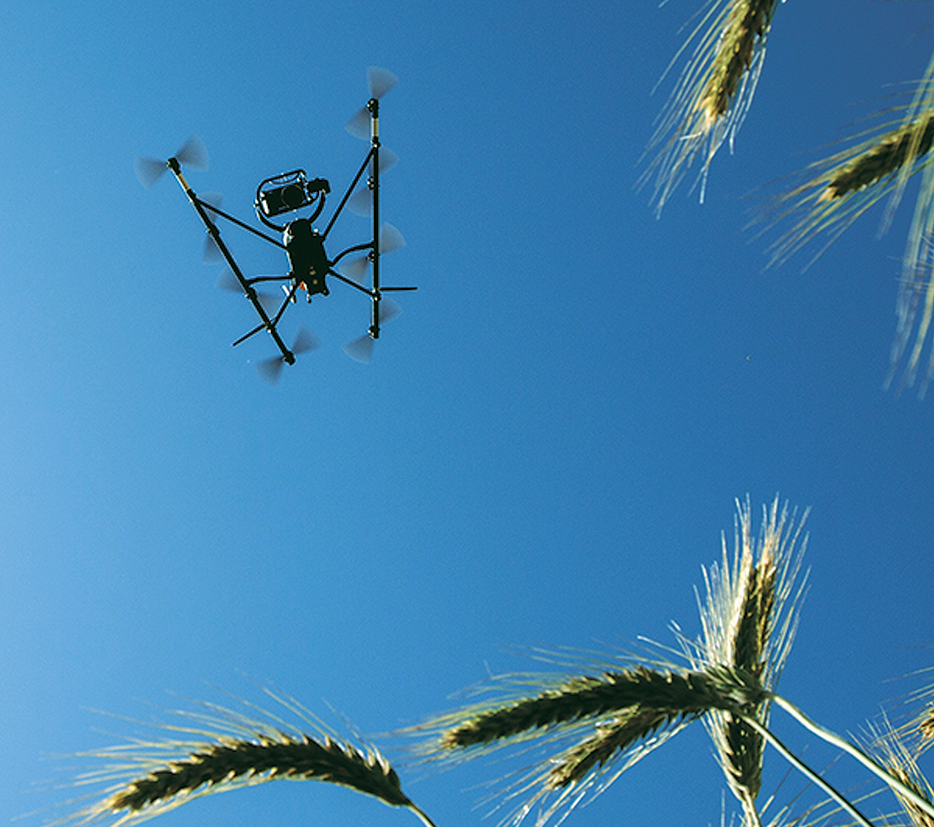
EL BATAN, Mexico (CIMMYT) — Focusing on the rapid advance in technologies to observe and record plant growth using technologies such as drones and automated sensors, 200 world-class scientists from over 20 countries will gather in Mexico from December 13 to 15 for the 4th International Plant Phenotyping Symposium.
Aiming to make breeding for food crops faster and more effective, experts will share news on the latest tools to measure plant traits and, combined with cutting-edge genetics and statistics, sharpen their understanding of how crops adapt to the environment.
“The ‘phenotype’ is the observable physical traits and behavior of an organism” said Matthew Reynolds, distinguished scientist and wheat physiologist at the Mexico-based International Maize and Wheat Improvement Center (CIMMYT) which, together with the International Plant Phenotyping Network, is organizing and hosting the event.
“In plant breeding, measuring crop traits in the field is largely prerequisite to genetic analyses,” Reynolds added. “A new generation of high-throughput phenotyping technologies based on remote sensing represents a giant step forward.”
DNA-based technologies such as molecular markers have immense potential to hone selection or provide useful information about target traits, according to Reynolds. “But now a revolution in plant phenotyping is taking place, using non-invasive technologies based on reflected light and near-light radiation from plant tissue, to assess the vigor and performance of crop trials,” he explained. “These developments promise to dramatically expand the scale and speed of phenotyping as well as the application of molecular tools in breeding.”
Bucking trends, boosting breeding gains
Trends suggest that crop breeding must gear up to feed a rapidly rising and more prosperous global population, but that breeding impacts are increasingly constrained by changing climates and new, more deadly crop diseases. “In the case of wheat, for example, yields must grow by at least 1.4 percent each year from now to 2030 to avoid critical food shortages, but since the 1990s, wheat’s yield growth rate has been far below that, at around 0.5 percent per year,” Reynolds said.
Emerging phenotyping technologies include automated or remote-controlled devices, such as field-level sensors, drone-mounted cameras or even satellites. As one example, experts from the John Innes Centre and the Earlham Institute in Britain will describe one such automated system they use to capture high-resolution data on crop growth, for plotting and analysis against detailed environmental data using cutting-edge models.
Interpreting plant images from remote sensors has proven a challenge. University of Nebraska scientists will present alternatives based on mathematical measurement and analysis of the volume of a plant’s silhouette and above-ground structure.
“In addition to learning from each other’s experiences, a half day is dedicated to drafting position papers on priority areas for future research,” Reynolds said. “Finally, a keynote talk and discussion will consider ways to harmonize the many phenotyping platforms that have emerged in recent years.”
Click here to view or download the book of abstracts of the event.
 Nutrition, health and food security
Nutrition, health and food security